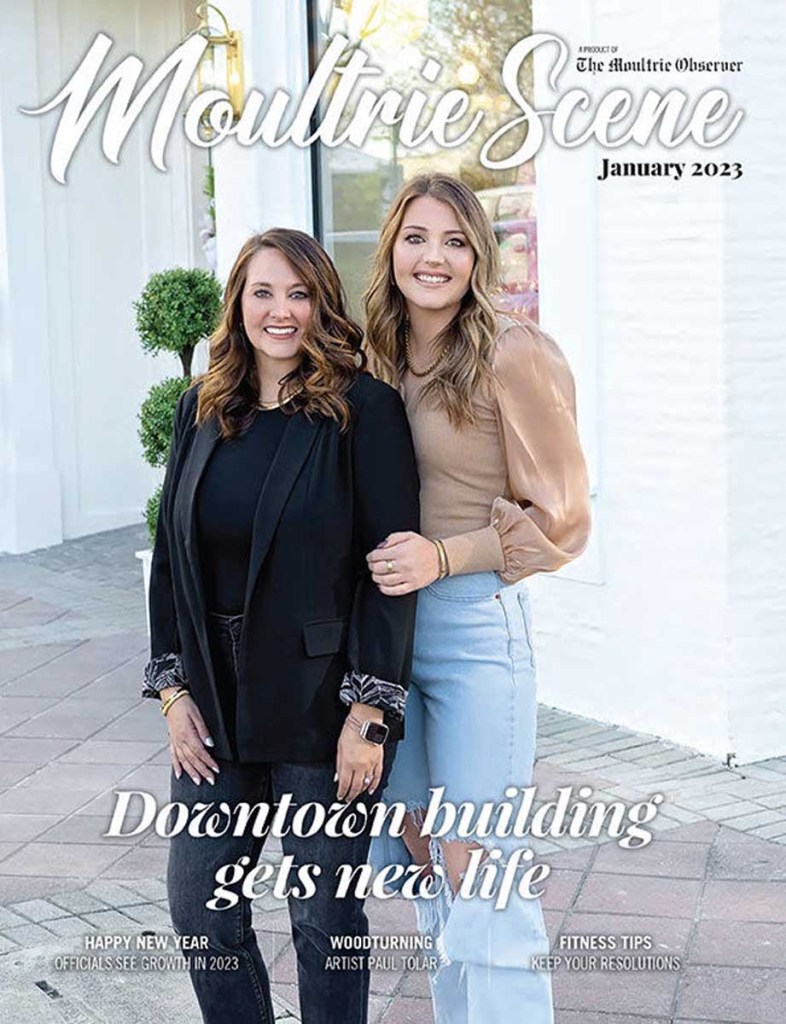Paul Tolar creates art on the lathe
Published 5:45 pm Friday, July 7, 2023

- This article first appeared in the January 2023 edition of Moultrie Scene magazine. Search for "Moultrie Scene" at www.moultrieobserver.com to read the complete issue.
Editor’s note: This article first appeared in Moultrie Scene magazine’s January 2023 edition.
Editor’s note: This article first appeared in Moultrie Scene magazine’s January 2023 edition.Paul Tolar came to Moultrie more than 40 years ago and discovered his art at the Colquitt County Arts Center, but his experience in practical woodworking goes back even further.
Trending
“I was born in Florida and grew up in Tallahassee and St. Augustine,” Tolar said. “Before my wife and I came to Moultrie in 1977, my involvement with art was sporadic. I sketched, took a few classes, and built a few craft projects. Then I discovered the Arts Center here – which still inspires me to this day – and took classes in pottery and photography. That’s where I first learned about composition and proportion.
“My interest in art really bloomed when I started working with local photographer Ann Ashley,” he said. “She encouraged me to study how light, form, and medium work together to make a piece of work pop in an interesting and beautiful way.” Tolar’s experience with woodworking began when he was employed in a boatyard several decades ago, where he built doors and windows for commercial fishing boats.
“I started turning in 2018 and educated myself through magazines and online videos,” he said. “A year later the opportunity arose for me to study at the John C. Campbell Folk School in western North Carolina. The class I took involved turning, wood selection, design, and embellishment.”
Wood turning is the craft of shaping a piece of wood as it turns on a spinning lathe. Chisels and similar tools are often used for this purpose, and the final product is usually symmetrical around the axis of rotation. The craftswoman or -man is known as a turner, and the craft itself is called turning or turnery.
Tolar described a key difference between his early and contemporary workings with wood: “In cabinet work or cabinetry, you take the wood to the spinning blade. In turning, you take the blade to the spinning wood.”
“In turning there are different chisels for different purposes,” he explained. “Face turning is a process used for bowls and plates when the grain of the wood runs perpendicular to the bed of the lathe. Spindle turning is used for objects like goblets and stair rail balusters. For this one the grain of the wood runs parallel to the lathe.”
Trending
The turner must be careful to use the right tools for the method of turning he or she has chosen.
“Otherwise things can become hazardous,” he said. “When the tool is not presented to the wood correctly it can create what we call a catch. The tool just digs in, and something’s gonna give. Usually it’ll just create a big gash in the wood which you then have to remove, but sometimes the consequences can be more serious.
“Once I was turning a platter and was almost completely finished. My chisel wasn’t cutting the way I wanted it to, and I thought it was getting dull. I brought the chisel up and I started looking for the one I want to replace it with. I turned around to look across the shop, and when I turned, the edge of the chisel hit the edge of the platter and took a big six-inch chunk out of the side. I was lucky – there were no casualties except for the platter!”
Tolar said that one of his greatest sources of inspiration is other turners. “I like to look at what somebody else has done and try to put my own spin on it. I also like looking at classical vessel shapes to get ideas and to see if I can put those into a wooden form. The art of Indigenous peoples is another source of inspiration.”
When starting a piece, he studies how the grain runs through the slab or block of wood, looking for swirls, knots, voids, inclusions, burls, or spalting (wood coloration caused by fungi) that might add character to the finished project. “Sometimes the inspiration is in the piece of wood you’re turning,” he said. “You let the wood go where it wants to go.”
Each turner has their own favorite species of wood, Tolar said. “Some of mine are pecan, walnut, magnolia, and any spalted wood. I like wood with unique features or a strong contrast between the sap wood and the heart wood. I also think camphor is a beautiful wood, if you can stand the smell.”
Tolar prefers to sustainably salvage fresh wood – such as limbs or trees knocked down by a storm – whenever possible. Creating platters and plates demands drier wood, and for these projects he sources from a mill in Quincy, Florida.
“There are different processes for turning fresh green wood versus dried wood,” he said. “A lot of folks give their bowls a rough turn while the wood is still green, and they leave enough thickness on the walls of the bowl to allow for further turning. When the bowl dries and warps a bit, the turner goes back with their chisel and lathe to get that bowl back to a round shape.
“Some artists turn their wood to its final form while it’s still green. If or when it warps later, they say: fine, that’s part of the art, part of the character.”
Asked if he has any goals for his work, Tolar replied: “I’d still like to get a place set up to showcase some of my work. I’ve had a few pieces on display at the Arts Center, and I’ll have more of my work in the AHA Tallahassee Gallery in Havana, Florida [from Aug. 5 through Dec. 30].” The AHA (Artist Helping Artist) Gallery is located at 307 N. Main St. in Havana, Fla. and will be open every Saturday 11 a.m. until 5 p.m.
Tolar is a member of three woodworking groups: Little River Woodturners, North Florida Woodturners, and The American Association of Woodturners. Through these organizations he has access to literature, videos, live demonstrations, and discussions of woodturning and related subjects, which provides avenues to expand and perfect his craft.
“I’ve made friends through the different wood turning clubs I’m a member of,” he said. “I think, or I hope, that art and artists can help draw a community together. If art isn’t a part of the community, it needs to be. I think life would be very boring without art.
“There’s a question that comes up a lot in the woodworking community: Is our work an art or a craft? I think if there is a difference, it’s a very fine line. I don’t think you can have one without the other, you can’t have art without craftsmanship and vice versa. A craftsman has to have some artist in him to create. and that artist has to have some skill and craftsmanship – he or she has to know where to chisel, where not to chisel, and how.”





